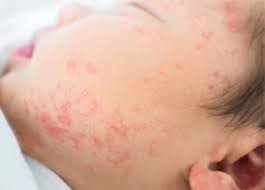Breastfeeding is the ideal food for the newborn and infants do not need any other food for the first six months. Despite the fact that the WHO and other health organizations have recommended exclusive breastfeeding up to six months and accompanied by other foods for up to two years or more, breastfeeding rates in our country are low.
This is due, in part, to the fact that breastfeeding is not always easy and we may encounter numerous difficulties and little support, in addition to having a short maternity leave that does not allow us to be with the baby for the first six months of life. Here are some of the most common breastfeeding problems that we attend to in the office and how we can solve them.
1. Pain when breastfeeding
Breastfeeding shouldn't hurt. It can be bothersome in the first feedings due to the hypersensitivity of the nipples and because it is a new sensation, but it should not be painful. If there is pain, it is up to the specialists to find out what it is.
One of the most frequent causes is a bad grip; If the baby is not properly latched on, it will suck poorly and injure the nipple. You must reposition it as many times as necessary to get a good hook.
It is good to alternate the postures to find the one in which the shot is best and ask for help from professionals if necessary. Other common causes of pain are the frenulum in the baby, infection and / or inflammation of the breast, abnormalities in the palate, inverted nipples and vasospasm or Raynaud's phenomenon.
As you can see, the causes of pain when breastfeeding are multiple; early diagnosis and treatment is essential to avoid unwanted weaning.
2. Acute mastitis
Mastitis is inflammation of the breast, which may or may not be accompanied by infection (usually bacterial). One or more quadrants of the chest become red, swollen, and very painful.
They are usually accompanied by systemic symptoms, such as when we have a flu: fever, general malaise ... The first thing you should do is ensure a correct emptying of the breast, frequently placing the baby to suckle in different positions (it is not necessary at all to stop breastfeeding ) and / or expressing milk with a breast pump or manually.
You can also apply cold and take medications to lower fever and reduce inflammation and pain (paracetamol or ibuprofen). If symptoms persist after 12-24 hours of effective voiding, you will likely need antibiotic treatment.
In this case, it is not necessary to stop breastfeeding as there are many compatible antibiotics and the baby can continue to drink the milk from the affected breast without problems (although sometimes they can reject it because the taste is different).
3. Cracks in the nipple
Unfortunately, it is so common to have cracks that many moms see it as something inevitable, that you have to go through. Well no, it is not necessary to "callus" "and it should not be normal to have cracks.
The cracks are produced by a poor latch on of the baby, which injures the nipple when sucking. Also here multiple remedies have been sought to solve it. According to the 2014 Cochrane systematic review, there was insufficient evidence that glycerin gel dressings, lanolin breast pads, lanolin alone or multifunctional nipple ointment significantly improved maternal perceptions of pain of the nipple.
Applying the milk itself on the nipple, something common a few years ago, is already inadvisable due to the risk of infection. And what do we do then? The main thing is to improve the hitch; It is good to vary positions and allow ourselves to be advised by personnel trained in breastfeeding. In the event that the pain is such that it does not allow you to breastfeed the baby, you can carry out delayed breastfeeding (expressing the milk manually or with a breast pump and giving it to the baby) until the cracks have healed.



0 Comments